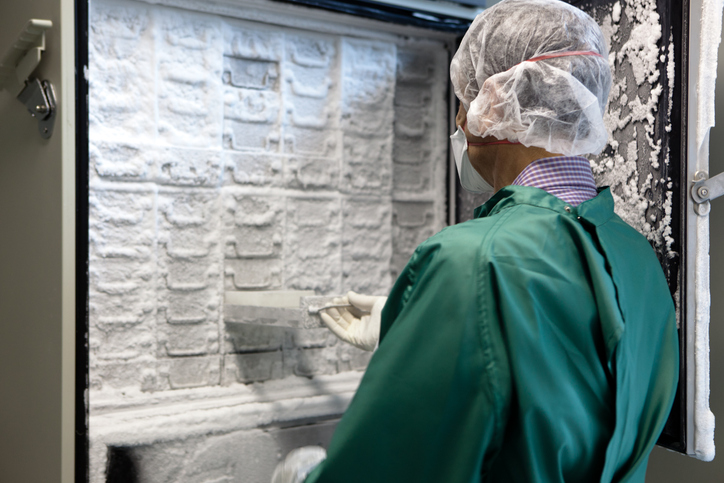 When designing industrial-grade, heavyweight products, factoring in motion control is crucial to both the product’s longevity and the end user’s safety. When used correctly, gas, spring-assisted, and counterbalance hinges significantly reduce the risk of injuries that can result in insurance claims or liability issues.
When designing industrial-grade, heavyweight products, factoring in motion control is crucial to both the product’s longevity and the end user’s safety. When used correctly, gas, spring-assisted, and counterbalance hinges significantly reduce the risk of injuries that can result in insurance claims or liability issues.
Designing a product with the wrong type of hinge can result in catastrophic consequences. In a “good, better, best” scenario, gas springs are good, spring-assisted hinges are better, and counterbalances are best.
But now the question is, which best meets your application’s performance and budget needs?
Types of Heavy-Duty, Spring-Assisted Hinges
When it comes to integrating motion control into your product design, there are three main types of hinges to consider:
- (Good): Gas spring hinges are typically the least expensive and most commonplace, famously found in car trunk/hatch lift-assist design. These hinges use compressed gas to assist weight mitigation. They get the job done for low-stakes applications, but they wear out easily and present safety issues in some environments.
- (Better) Mechanical spring hinges are higher-quality hinges with integrated springs used to ease a burden. Spring-assisted hinges can allow for effortless lifting and lowering of a lid and for higher cycle life applications.
- (Best) Counterbalance hinges are the Cadillacs of hinges. They counter the pull of gravity on a lid or a door, requiring little effort to open or close. They also enable the user to open a lid to the desired level and leave it in position without external support.
If low cost and off-the-shelf availability are your main concerns, gas springs are most suited for your design. For higher-end designs, spring assists and counterbalances take all aspects of quality into consideration:
- Cycle life
- Surface finish
- Opening angles
- Opening and closing forces
- Dampening features
- Environmental/end-use factors
- Mounting locations
- Food-grade lubricants
- Soft opening features
- Self-closing features
In successful designs, spring assists and counterbalances often go unnoticed by the end-users -- they only notice the quality “feel” of the lid.
3 Important Design Considerations for Heavy-Duty Spring-Assisted Hinges
With heavy-duty doors and lids, integrating the proper type of hinge in your product design is paramount for efficiency, life span, and safety. When designing a product requiring a heavy-duty, spring-loaded mechanism, consider:
1. Durability
When designing products for aerospace, defense, or healthcare industries, durability is one of many key design factors. Your product needs to be able to withstand extreme conditions without the risk of catastrophic failure. Incorporating heavy-duty spring-assisted hinges into your design will ensure a long-term, durable solution.
For example, when designing armored vehicles to be used in the desert or a potentially explosive environment, incorporating gas springs into your design will greatly increase the risk of catastrophic failure. Mechanical hinges provide a safe and durable solution when weight mitigation is needed in extreme heat or pressure.
On the other end of the spectrum, if you’re working with cryogenic freezers that house medical tests or supplies, your hinge needs to be able to withstand the sub-zero temperature. For higher-quality, more durable hinges with a longer life span, spring assists and counterbalances are the only viable options.
An important note about gas springs: Because gas springs store energy pneumatically using nitrogen gas, if the hinge leaks or fails, you could be contaminating your work surface, and in the event of high heat, explosion. Using gas springs in extreme weather or under high temperatures increases the likelihood of hinge failure or potential explosion.
2. Improved Safety
When designing products with durable (albeit heavy) materials, weight mitigation is a must for the safety of the end-users. We’re not just talking about a pinched finger; we’re talking about expensive, long-term worker’s comp claims and lawsuits from consumers.
For industrial and hospitality applications, back-mounted hinges can reduce the force needed to open or lift a heavy door, lid, or countertop. Designing products with spring-assisted soft-close and soft-open hinges protect workers from repetitive-use injuries.
Take the lid of an ice cream freezer -- the worker needs to open and close the lid repeatedly -- nobody wants melted ice cream. Having to repeatedly open a heavy lid will not just tire out the worker, it could also mean a painful injury if the lid slips out of their hand. Counterbalance hinges can not only mitigate the weight but also hold it in one location, removing the risk of smashed fingers and shoulder strain.
A vertical Murphy bed, which requires substantial force to raise up, can mean a backache for months if it falls. Integrating motion-control hinges into a fold-down bed reduces its weight and allows for single-person operation.
3. Robust Customization
Product design can be a very intricate puzzle, and hinge customization allows for pieces to fit where they may not have before. When designing a product with a counterbalance or spring assist hinge, everything is customizable, including:
- Hinge-movement: To save space and improve user experience, designers often rely on their hinges for an advanced and custom range of movements. Some hinges are designed to operate differently from closed to 25º and from 25°-50°. Other hinges may boast custom movements to avoid interference points (instead of opening directly up, it may pull out, then up). Heavy-duty, spring-assisted hinges can include a range of motion control features that pivot a certain way to avoid interference points.
- Soft-close and soft-open features: Some lid or cover designs include slowed movement on the way up or down. With spring-assist hinges and counterbalanced hinges, custom motion features such as soft open or close features, and customized weight control, can increase usability without sacrificing the premium feel.
- Weight mitigation: For some product designers, weight can represent quality. While weight-mitigating factors are important for a granite lift-up countertop, they will want the product to leave an impression of quality and durability (and not flimsiness). Spring-assist hinges allow designers to alleviate some of the weight without sacrificing the quality feel.
6 Uses for Heavy-Duty Spring Hinges
Heavy-duty spring hinges have a wide range of motion control applications, including (but not limited to) opening and closing the lids smoothly, and mitigating weight.
Heavy-duty spring assists and counterbalances are commonly found in:
- Cryogenic freezers
- Flip-up countertops
- Guarding equipment on industrial machinery (CNC machines)
- Industrial-grade toolboxes
- Pharmaceutical and medical storage equipment
- Hospitality equipment and furniture
If your product is still in the design stage, or safety issues have prompted a redesign, consider incorporating heavy-duty spring hinges for your doors and lids. The hinges will reduce the effort required to operate the product, and enhance durability and safe use.
For more information on how you can incorporate heavy-duty, spring-assisted hinges into product design, play around with the Vectis™ DYO counterbalance hinge app here:
.png?width=12000&height=2033&name=WeberKnappLogo_white%20(1).png)


